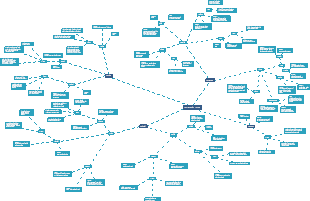Alzheimer‘s disease is characterized by a regression of nerve cells, which can result in the brain shrinking up to 20%. The consequence is an impaired relay of information. Furthermore, Alzheimer’s may make processing information nearly impossible. At the same time, plaques of protein fragments form. Brain regions responsible for processing information and memory performance are particularly affected by Alzheimer’s disease.
In the case of amnesia, patients cannot store experiences or learned knowledge, and this can affect all types of information or only certain parts. For example, patients can lose access to memories from certain stages of their lives. In most cases, the patient can remember events that happened long ago rather than events that occurred just lately
Pathology of Memory Performance
Items to be recalled are mentally associated with these physical locations or loci
Provides a deeper representation
Also known as the ‘Journey method’
involves imagining moving through a familiar place and having stops or loci.
Rehearsal: use of the phonological loop
Mnemonic - is any technique for improving retention and retrieval from memory.
Process that aid in encoding memories
For storing memories in long-term memory, repetition is particularly important. This concept is easily understandable when one considers the high amount of repetition required to learn new movement patterns, e.g., when learning a new sport.
hippocampus, located in the cerebral cortex, is involved in the process of transmitting information from the primary memory to the long-term memory. The hippocampus is thought to be involved in this process because when lesions appear in the hippocampus, only the short-term memory remains intact. Another term for primary memory is ‘labile memory’ since it is very unstable. One distraction is enough to forget the perceived or heard information. Calcium has a major role in these processes.
Memories in the primary memory (short-term memory) are available as long as we occupy ourselves with them. If that process is interrupted, the memory is lost too. Memories that begin in the primary memory can be available permanently, but only if they are transferred to long-term memory. It is assumed that short-term memory is a transit for experiences into long-term memory.
Short-term memory (primary memory)
The ultra-short-term memory receives stimuli from sensory organs in the form of neuronal excitation. This process has a duration of less than 1 second, and the perception can take place via the eyes or ears. The ultra-short-term memory via the eye is also referred to as iconic memory, and via the ears, echoic memory (and it perishes just as fast). Only stimuli that reach the short-term memory remain because the ultra-short-term memory has no storage capabilities.
Sensory memory(ultra-short-term memory)
The Papez circuit proceeds as follows: hippocampus → fornix → mammillary body inside the hypothalamus (corpora mammillaria) → cingulate cortex → hippocampus
These days, it is assumed that the Papez circuit serves the storage of memories by transferring information from the primary memory (short-term memory) to the secondary memory (long-term memory) or the tertiary memory (an independent part of the long-term memory).









